Varicose veins—those bulging, twisted veins most commonly seen in the legs—aren’t just a cosmetic concern. For many people, they come with discomfort, heaviness, swelling, and sometimes even pain. Thankfully, modern medicine offers several effective treatment options for varicose veins. These range from minimally invasive to slightly more involved procedures.

Ambulatory Hook Phlebectomy
Ambulatory Hook Phlebectomy is a surgical technique used to remove varicose veins near the skin’s surface. It’s a minimally invasive outpatient procedure, usually performed under local anesthesia. The surgeon makes tiny punctures or incisions to extract the problematic veins using a special hook-like instrument.
The biggest advantage of this procedure is its precision. It’s particularly effective for removing large, ropey varicose veins that are too big for treatments like sclerotherapy. Since the incisions are so small, they usually don’t require stitches and leave minimal scarring. Most patients can return to normal activities within a day or two. However, doctors typically recommend compression stockings during the healing process.
Endovenous Laser Treatment (EVLT)
EVLT, also known as endovenous laser ablation, is a highly effective, less invasive alternative to traditional vein stripping surgery. In this procedure, doctors insert a thin laser fiber into the affected vein via a small catheter. The laser emits heat, sealing the vein shut from the inside. This naturally reroutes blood to healthier veins. The treated vein is gradually absorbed by the body.
This treatment is often ideal for deeper varicose veins and is performed under local anesthesia. It usually takes less than an hour and involves little to no downtime. Most people experience significant relief from symptoms like aching or swelling shortly after the procedure. EVLT has a high success rate and minimal complications, making it a popular first-line treatment.
Sclerotherapy
Sclerotherapy is one of the most common treatments for smaller varicose veins and spider veins. Doctors inject a special solution, usually a saline or detergent-based sclerosant, directly into the vein. This irritates the vein lining, causing it to collapse and eventually fade from view.
Sclerotherapy is often used for cosmetic improvement. However, it could also relieve symptoms like burning, cramping, or swelling. Multiple sessions may be needed depending on the number and size of the veins. It’s quick, typically painless, and done in a clinic setting with no anesthesia required. There may be some mild bruising or swelling afterward, but most people resume normal activities almost immediately.
Choosing the Right Treatment
The best treatment for varicose veins depends on the severity of the condition, your symptoms, and your health history. A vein specialist or vascular surgeon can help determine which option is most appropriate after a thorough examination, often including an ultrasound. With today’s medical advancements, dealing with varicose veins doesn’t have to be a lifelong struggle.
Treatment Options for Varicose Veins in Springboro, OH
If you suffer from painful or bulging veins, Varicose to Perfect is here to help. We offer a range of treatment options for varicose veins. Our experienced team of vein specialists can help you determine which option is right for you. Contact us today to schedule your consultation and learn more.
